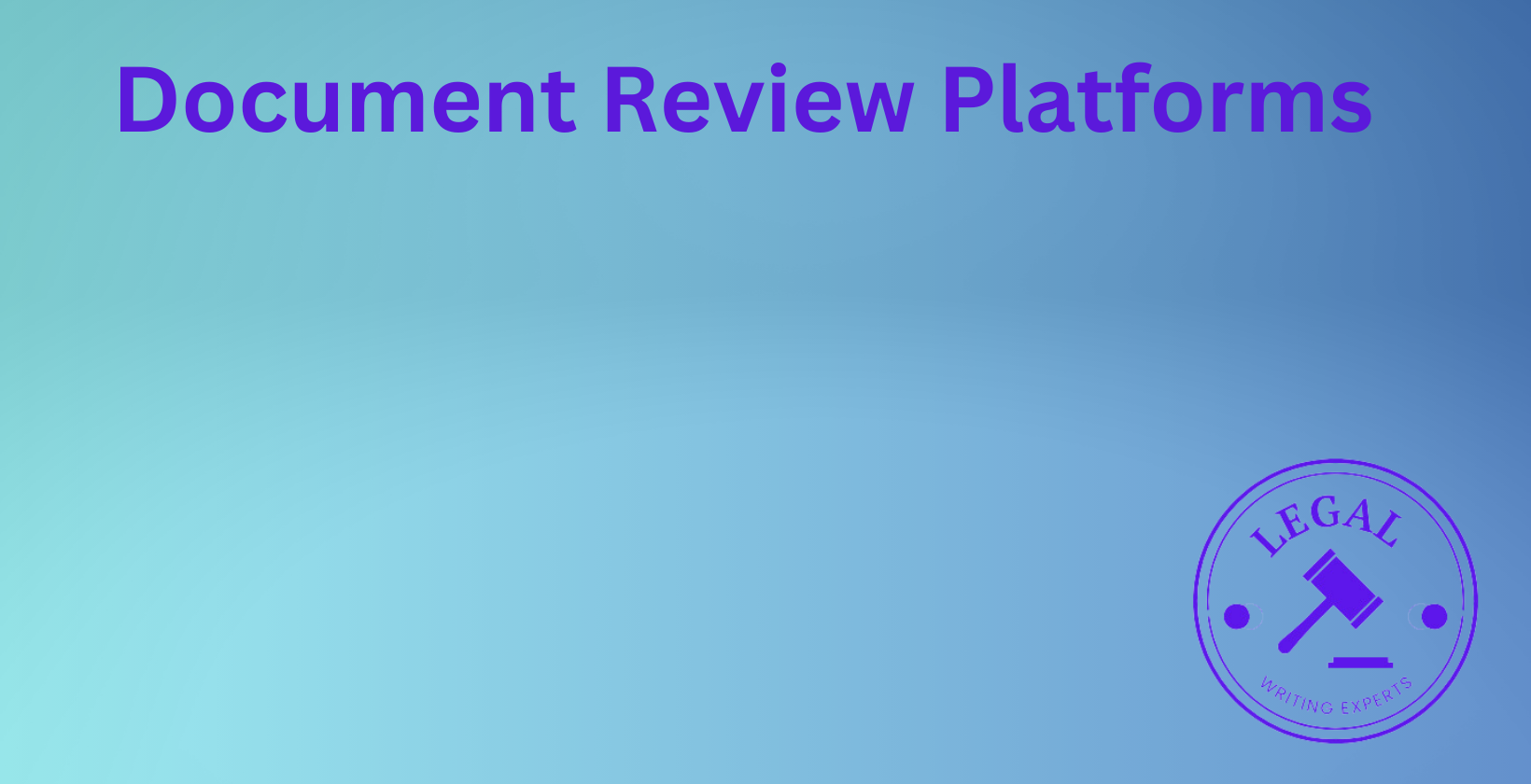Document Review Platforms
Written by
Jessica E
January 04, 2025 · 8 min read

Document review platforms are essential tools in the modern legal and business landscape, streamlining the process of reviewing, organizing, and analyzing vast quantities of documents. These platforms have transformed the way legal teams handle cases, enabling faster decision-making, enhanced accuracy, and improved data security. With features such as artificial intelligence, machine learning, and seamless integration capabilities, they cater to the needs of legal professionals, compliance officers, and businesses engaged in document-intensive work. This article will explore what document review platforms are, their features, benefits, cost considerations, and how they enhance efficiency in legal workflows.
What Are Document Review Platforms?
Document review platforms are digital tools designed to assist legal professionals and organizations in managing, analyzing, and reviewing large volumes of documents. These platforms are commonly used during legal proceedings, mergers and acquisitions, compliance reviews, and regulatory investigations. By centralizing document management, they help users locate relevant information quickly, reducing the time spent on manual reviews.
How Do Document Review Platforms Assist in Legal Proceedings?
Document review platforms assist in legal proceedings by enabling users to identify, classify, and analyze relevant case materials. These platforms use advanced search tools, tagging systems, and machine learning algorithms to pinpoint critical information in extensive datasets. They are particularly valuable in discovery processes, helping lawyers organize evidence, identify privileged information, and prepare for litigation more efficiently.
What Features Should You Look for in a Document Review Platform?
The features you should look for in a document review platform include robust search capabilities, user-friendly interfaces, advanced analytics, and AI-driven automation. Scalability is critical for handling large datasets, and integration capabilities ensure compatibility with existing legal software. Collaboration tools, customizable workflows, and strong security measures are essential for seamless operation and compliance with legal standards. For example, platforms with predictive coding reduce review time by identifying patterns in data.
How Do Document Review Platforms Ensure Data Security and Confidentiality?
Document review platforms ensure data security and confidentiality through encryption, access controls, and secure cloud storage. They comply with data protection regulations such as GDPR or CCPA and often include features like audit trails to monitor data access. Multi-factor authentication and secure file sharing minimize unauthorized access, ensuring sensitive legal documents remain protected.
What Are the Leading Document Review Platforms Available Today?
The leading document review platforms available today include tools that provide comprehensive features for legal workflows. They are recognized for their scalability, advanced analytics, and user-friendly interfaces. Examples of top-tier platforms in this category support AI-driven functionalities, integration with case management software, and robust security protocols.
How Do AI and Machine Learning Enhance Document Review Processes?
AI and machine learning enhance document review processes by automating repetitive tasks, improving accuracy, and speeding up analysis. These technologies enable predictive coding, which helps prioritize documents based on relevance, and sentiment analysis, which identifies the tone or intent of communication within documents. According to a study from Stanford University’s Law Department, AI-driven platforms reduce review time by 60% while improving accuracy by 30%.
What Are the Cost Considerations When Choosing a Document Review Platform?
The cost considerations when choosing a document review platform include subscription fees, licensing, implementation costs, and ongoing maintenance. Prices vary based on the platform’s features, data storage requirements, and scalability. Organizations must evaluate their needs against the platform’s pricing tiers to avoid unnecessary expenses. For instance, cloud-based solutions often offer more flexibility and lower initial costs compared to on-premise platforms.
How Do Document Review Platforms Integrate with Existing Legal Software?
Document review platforms integrate with existing legal software by using APIs, plug-ins, and built-in compatibility features. They connect seamlessly with case management tools, billing systems, and communication platforms, creating a unified workflow. This integration reduces data silos, allowing legal professionals to access all necessary information within a single interface.
What Training and Support Are Typically Offered by Document Review Platforms?
Training and support typically offered by document review platforms include onboarding programs, webinars, detailed user guides, and customer support channels. Some providers offer personalized training sessions and dedicated account managers to ensure clients maximize the platform’s potential. For example, many platforms provide 24/7 customer support to address technical issues promptly.
How Can Document Review Platforms Improve Efficiency in Legal Workflows?
Document review platforms improve efficiency in legal workflows by automating document categorization, facilitating collaboration, and reducing manual errors. They enable faster case preparation, more accurate compliance reviews, and better resource allocation. Research by the American Bar Association shows that firms using these platforms report a 50% increase in productivity and reduced case completion times.
Meet the Author
Distinguished linguist at Legal Writing Experts
Jessica is an expert legal writer with a remarkable blend of legal knowledge and linguistic precision. She earned her Juris Doctor degree from Duke University, where she attended on a prestigious Law Faculty Merit Scholarship. At Duke, Jessica demonstrated her exceptional abilities by serving as an editor of the Duke Law Review.
After graduating, Jessica further refined her skills during a two-year appellate clerkship at a distinguished law firm in North Carolina. Throughout law school, she enhanced her research and writing expertise as a research assistant and writer for various legal firms. Jessica’s deep understanding of legal language and meticulous attention to detail make her an invaluable asset to our legal writing services.


